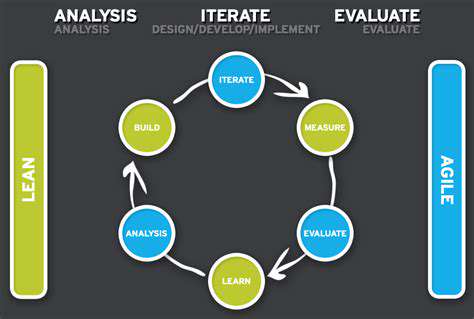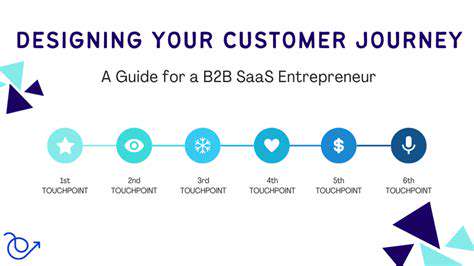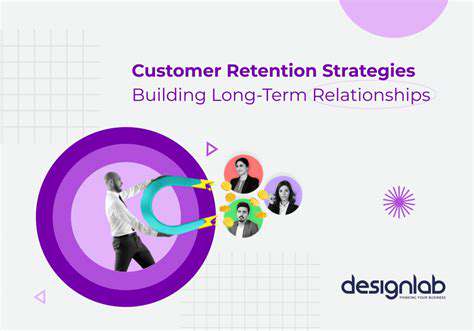Performance Based Marketing: Beyond Last Click
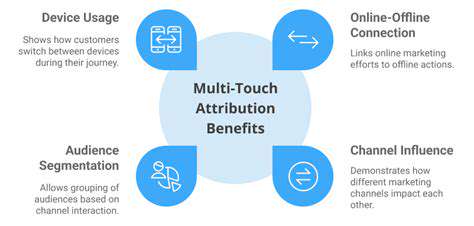
Understanding Multi-Touch Attribution
Multi-touch attribution (MTA) is a marketing attribution model that recognizes the contributions of multiple touchpoints in a customer journey to drive conversions. Unlike single-touch attribution, which credits a single interaction, MTA acknowledges...e entire sequence of interactions, including website visits, social media engagements, email opens, and ads clicked, that ultimately lead to a desired outcome, such as a sale or lead generation. This holistic approach provides a more comprehensive understanding of customer behavior and allows for more effective marketing strategies.
Key Advantages of Multi-Touch Attribution
Implementing MTA offers several crucial advantages for marketing professionals. It provides a more accurate picture of campaign performance by revealing the full impact of various marketing channels. This detailed view allows for better budget allocation and optimization by directing resources toward channels that demonstrate the greatest return on investment (ROI). Furthermore, MTA enables a deeper understanding of the customer journey, helping marketers identify crucial touchpoints and optimize the customer experience.
This deeper understanding of the customer journey empowers businesses to create targeted campaigns that resonate more effectively with their audience. By analyzing the sequence of interactions, marketers can better understand customer needs and preferences, enabling them to refine their messaging and improve conversion rates.
Different Multi-Touch Attribution Models
Several MTA models exist, each with its own approach to distributing credit across various touchpoints. The linear model, for example, equally distributes credit across all touchpoints. Other models, such as the time decay model, assign more weight to touchpoints closer to the conversion, recognizing the impact of recency. Understanding the nuances of each model is essential to selecting the appropriate one for specific marketing campaigns and business objectives. Choosing the right model is critical to achieving accurate and insightful attribution data.
Challenges and Considerations in MTA Implementation
While MTA offers significant benefits, implementing it effectively presents certain challenges. One key challenge is data integration. Successfully combining data from various sources, such as website analytics, CRM systems, and marketing automation platforms, is crucial for accurate attribution. Furthermore, defining clear conversion goals and tracking mechanisms is essential to ensure that the data collected accurately reflects the desired outcomes.
Another critical consideration is the potential for bias in the data. For instance, the data may reflect the order of interactions rather than the actual influence of each touchpoint. Therefore, it's crucial to critically evaluate the data and consider external factors that may affect the attribution results. Careful consideration of these factors is essential for deriving meaningful insights from the data.
Optimizing Marketing Strategies with MTA Insights
The insights derived from MTA can significantly enhance marketing strategies. By understanding which touchpoints are most effective in influencing conversions, marketers can refine their messaging, optimize campaign timing, and personalize customer interactions. This data-driven approach allows businesses to allocate budgets effectively and improve overall ROI. This ultimately leads to more efficient and effective marketing campaigns, driving significant improvements in business outcomes.
Beyond Attribution: Considering the Customer Journey
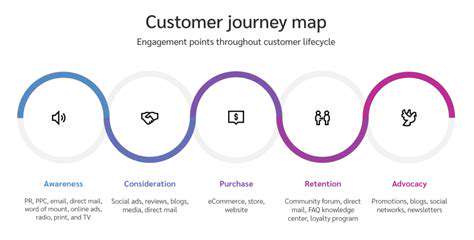
Beyond the Basics of Attribution
Understanding attribution models is crucial for marketing professionals, but it's only the first step. A deeper dive into the complexities of customer journeys reveals that attribution alone often fails to capture the full picture. Focusing solely on last-click attribution can lead to overlooking the significant contributions of earlier touchpoints in converting a lead into a customer. Moreover, real-world customer journeys are rarely linear, with multiple touchpoints contributing to decision-making. This necessitates a more holistic approach that considers the entire customer journey and the interconnectedness of various interactions.
Analyzing customer behavior across different channels is paramount. Tracking the sequence of interactions, from initial awareness to final conversion, provides valuable insights into the effectiveness of each touchpoint. This understanding allows marketers to optimize campaigns and strategies to maximize their impact on the customer journey. Ultimately, a more complete understanding of attribution goes beyond simply identifying which touchpoint led to a conversion; it's about understanding how those touchpoints work together to drive results.
The Role of Contextual Factors
Beyond the mechanics of attribution, contextual factors significantly influence customer behavior. The timing of a campaign, the platform utilized, and the specific content shared all play a vital role in shaping customer perception. Marketers need to consider the broader context surrounding each interaction to fully appreciate the impact of their efforts. This includes understanding the customer's stage in the buying cycle, their existing knowledge, and their specific needs.
For example, a customer encountering a product advertisement at a time of heightened need or interest will likely react differently than a customer who encounters the same advertisement at a less opportune moment. Understanding these contextual nuances is crucial for tailoring marketing campaigns to resonate with individual customers and maximize their impact. This requires a shift from a purely quantitative approach to attribution to a more qualitative understanding of customer behavior.
Customer Journey Mapping for Holistic Insights
Moving beyond individual touchpoints, a robust customer journey map provides a comprehensive view of the entire customer experience. This detailed map allows marketers to identify key moments and touchpoints across various channels and platforms. This visual representation enables a deeper understanding of how customers interact with a brand, from initial awareness to post-purchase engagement.
By mapping the customer journey, marketers can pinpoint areas where the customer experience is lacking and identify opportunities for improvement. Understanding the customer's emotional journey and pain points allows for the development of tailored messaging and experiences. This holistic approach to understanding the customer journey provides a wealth of data that can be used to optimize every stage of the customer lifecycle. A well-defined customer journey map allows for a greater understanding of the customer's needs and behaviors and how they influence their purchasing decisions, thus leading to more effective marketing strategies.
Beyond Conversion: Measuring Customer Lifetime Value
Focusing solely on conversions limits the potential of understanding customer value. Measuring customer lifetime value (CLTV) offers a more comprehensive view of the overall return on investment (ROI) from each customer interaction. This metric provides a more accurate reflection of the long-term value a customer brings to the business. By considering the entire customer lifecycle, from initial acquisition to repeat purchases and advocacy, CLTV provides a more accurate measure of a customer's long-term contribution.
Analyzing CLTV allows for a more nuanced understanding of the true value of each customer, enabling better resource allocation and personalized marketing strategies. This approach shifts the focus from short-term gains to long-term relationships, ultimately leading to a stronger and more sustainable business model. Understanding customer lifetime value allows for a more accurate and comprehensive view of the return on investment from each customer interaction. By incorporating CLTV into the marketing strategy, businesses can make more informed decisions, ultimately leading to increased profitability and customer loyalty.
Optimizing Campaigns for Enhanced Performance

Optimizing Campaign Targeting
Effective campaign targeting is crucial for maximizing ROI. By meticulously analyzing demographics, psychographics, and behavioral patterns of your target audience, you can ensure your messaging resonates deeply and drives conversions. This precise targeting ensures that your ads reach the individuals most likely to be interested in your products or services, drastically reducing wasted ad spend. A well-defined target audience allows for a more personalized and engaging experience for each user, increasing the likelihood of a positive interaction.
Crafting Compelling Messaging
Crafting compelling copy that captivates attention and motivates action is paramount to campaign success. Clear, concise, and persuasive language is essential for communicating your value proposition effectively. Focus on highlighting the benefits and advantages of your offerings, rather than simply listing features. A strong call to action encourages engagement and drives conversions.
Leveraging Strategic Channels
Choosing the right channels for your campaign is vital to reach your target audience effectively. Consider factors like the platform's user demographics and engagement patterns. Optimizing your campaign across multiple channels can significantly amplify your reach and impact. By tailoring your message to the specific characteristics of each platform, you'll create a more consistent and impactful user experience.
Implementing Data-Driven Decisions
Data analysis is a cornerstone of successful campaign optimization. Tracking key metrics like click-through rates, conversion rates, and cost-per-acquisition provides valuable insights into campaign performance. Regular analysis of this data allows you to identify areas for improvement and refine your strategy for maximum impact. By understanding what works and what doesn't, you can make data-driven adjustments and achieve better results.
A/B Testing for Enhanced Performance
A/B testing different elements of your campaign, such as headlines, images, and calls to action, is a powerful tool for optimizing performance. By testing various versions of your campaign elements, you can identify which variations are most effective at driving engagement and conversions. This iterative process of testing and refining ensures that your campaign consistently delivers optimal results, maximizing the return on your investment.
Maintaining Constant Monitoring and Adjustments
Campaign performance is not static; it requires constant monitoring and adjustment. Stay vigilant in tracking key metrics and analyzing trends. Proactive monitoring allows for swift adjustments to your strategy, ensuring that your campaign remains aligned with the evolving needs and behaviors of your target audience. Adaptability to changing market conditions and user preferences is critical to sustained campaign success. This proactive approach allows you to capture emerging opportunities and mitigate potential threats.
Future-Proofing Your Performance Marketing Strategy
Adapting to Evolving Consumer Behavior
The digital landscape is constantly shifting, demanding a proactive approach to performance marketing. Understanding and adapting to evolving consumer behavior patterns is crucial for sustained success. This includes analyzing emerging trends in online shopping habits, social media engagement, and mobile usage. Staying ahead of the curve allows marketers to anticipate customer needs and adjust their strategies accordingly. By consistently monitoring and analyzing data, businesses can identify potential shifts in consumer preferences and proactively adjust their targeting and messaging to maintain a competitive edge. This adaptability is not just about reacting to change, but about anticipating it and proactively shaping the customer journey.
Consumer expectations are higher than ever, with a greater demand for personalized experiences. Marketing strategies need to move beyond generic campaigns and focus on building relationships through targeted and relevant content. This personalized approach, when executed effectively, leads to increased customer engagement, loyalty, and ultimately, higher conversion rates. By tailoring messages to individual preferences and needs, businesses can foster deeper connections with their audience, resulting in a more positive brand perception and improved ROI.
Leveraging Emerging Technologies and Tools
The performance marketing landscape is constantly evolving, introducing new technologies and tools that offer enhanced opportunities for optimization and analysis. Keeping up with these advancements is essential for staying competitive. This includes exploring and adopting new platforms, such as AI-powered marketing automation tools, to streamline workflows and achieve greater efficiency. Leveraging innovative technologies can significantly improve campaign performance and provide valuable insights into consumer behavior.
Investing in data analytics and machine learning tools is critical for identifying patterns and trends in campaign performance. This allows marketers to gain a deeper understanding of what works and what doesn't, enabling data-driven decision-making to optimize campaigns and maximize return on investment. The use of sophisticated analytics tools empowers marketers to fine-tune their strategies, personalize user experiences, and ultimately achieve greater success in the dynamic world of performance marketing.
Staying informed about advancements in A/B testing, retargeting, and programmatic advertising is vital. These tools allow for continuous refinement of campaigns, optimizing for conversions and driving better ROI. Embracing these technologies enables businesses to remain adaptable and responsive to the ever-changing demands of the digital marketplace.
Incorporating emerging technologies and tools into your strategy is not just about staying relevant; it's about gaining a significant advantage over competitors. By proactively exploring and implementing these advancements, businesses can unlock new possibilities for growth and success in the rapidly evolving world of online marketing. Ultimately, this forward-thinking approach is key to future-proofing your performance marketing efforts.
Read more about Performance Based Marketing: Beyond Last Click
Hot Recommendations
- Personalizing Email Content with User Behavior
- Geofencing for Event Attendance Tracking
- Reputation Management on Social Media
- UGC Beyond Photos: Videos, Testimonials, and More
- The Future of Data Privacy Regulations
- Accelerated Mobile Pages (AMP) Benefits and Implementation
- The Future of CRM: AI and Voice Integration
- Google Ads Smart Bidding Strategies: Maximize Value
- Common A/B Testing Pitfalls to Avoid
- Local SEO Strategies for Small Businesses


